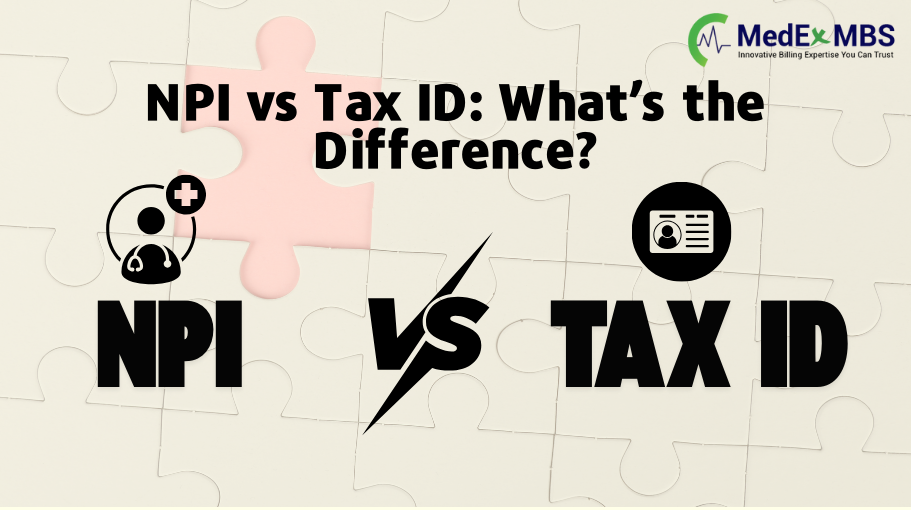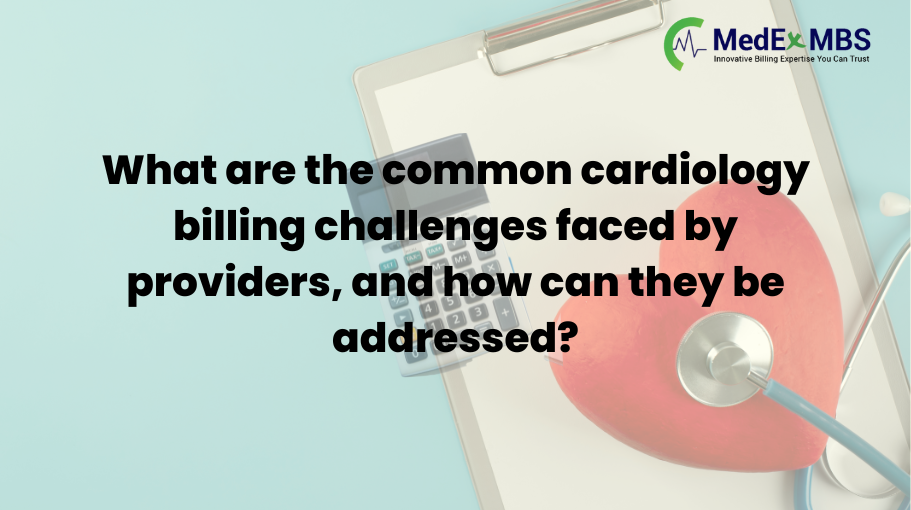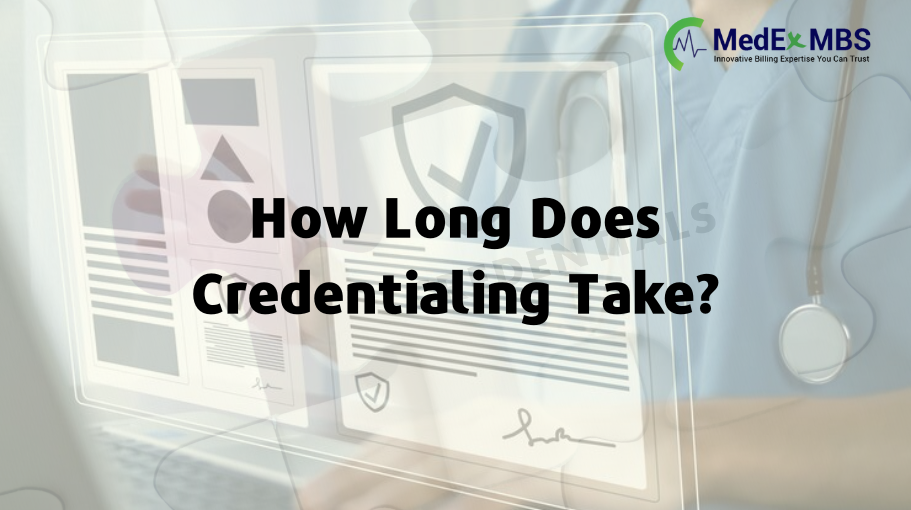NPI vs. Tax ID: What’s the Difference?

In the realm of medical billing, identifying providers is crucial for the accurate submission of claims and the proper reimbursement process. Among the key identifiers utilized in healthcare are the NPI (National Provider Identifier) and the Tax ID (TIN or EIN: Employer Identification Number). Although these identifiers are frequently referenced together, they fulfill distinctly different functions. If you are in the process of establishing a new practice, billing for claims, or engaged in healthcare administration, comprehending the operation of these two numbers and their combined usage can prevent you from experiencing expensive delays or claim denials. Let us clarify this further. What is an NPI Number? An NPI (National Provider Identifier) is a unique 10-digit identification number assigned to healthcare providers by the Centers for Medicare & Medicaid Services (CMS). It is a requirement for all entities covered by HIPAA, which includes: Physicians Dentists Nurses Clinics Hospitals Laboratories Pharmacies Why is it Necessary? The NPI serves to identify the individual who provided the healthcare service. It is utilized in claims, referrals, eligibility verifications, and other electronic transactions that adhere to HIPAA standards. What Are Type 1 and Type 2 NPIs? National Provider Identifiers (NPIs) are unique identification numbers employed within the U.S. healthcare system. They assist insurance companies and other providers in recognizing who delivered the care and the location of the service. NPIs are essential for billing and are utilized in all tasks related to HIPAA. There are two categories of NPIs: Type 1 NPI is designated for individual healthcare practitioners such as doctors, dentists, nurses, and therapists. Each individual is permitted to possess only one Type 1 NPI, regardless of their employment at multiple locations. Type 2 NPI is intended for healthcare entities, including hospitals, clinics, and group practices. These organizations may hold multiple Type 2 NPIs if they operate from various offices or have different business configurations. Both types of NPI are essential. For instance, when a patient visits a large clinic, the Type 2 NPI indicates which clinic was attended, while the Type 1 NPI identifies the specific provider who treated the patient. Example: Consider Dr. Emma Torres, a family physician at City Wellness Clinic. Torres’ Type 1 NPI: 1234567890 City Wellness Clinic’s Type 2 NPI: 1122334455 In a claim, the individual provider’s NPI (Dr. Torres) may be listed in the rendering provider field, while the clinic’s NPI is recorded in the billing provider field. Comparison Table: Type 1 vs. Type 2 NPI Feature Type 1 NPI (Individual) Type 2 NPI (Organization) Definition Assigned to individual healthcare providers Assigned to healthcare organizations or group entities Who Qualifies Physicians, dentists, nurses, physical therapists, pharmacists, BCBAs, RBTs, etc. Hospitals, physician groups, clinics, nursing homes, home health agencies, etc. Number Per Entity One NPI per individual, regardless of locations One or more NPIs, depending on the structure or practice locations Purpose Identifies the specific provider who delivers care Identifies the organization or facility where care is delivered Required For Individual billing, credentialing, claims, and prescriptions Facility-level billing and organizational claims processing HIPAA Compliance Mandatory for individual providers under HIPAA Mandatory for organizations handling HIPAA transactions Billing Example Used to specify who treated the patient in a group or hospital Used to specify where the patient was treated or which organization provided care Issued By Centers for Medicare & Medicaid Services (CMS) Centers for Medicare & Medicaid Services (CMS) Format 10-digit numeric code (same for both types) 10-digit numeric code (same for both types) Steps and Requirements to Obtain an NPI Healthcare professionals and organizations are required to obtain a National Provider Identifier (NPI) to engage in insurance credentialing and billing. This 10-digit number is used to uniquely identify providers in healthcare transactions. NPI numbers are classified into two categories: Type 1 is allocated to individual healthcare providers, whereas Type 2 is assigned to organizations and group practices. For Individual Providers: Applicants are required to submit personal information, which includes their full name, date of birth, and Social Security Number. Additionally, details regarding their practice, such as location, specialty, and any relevant licenses or certifications, must be provided during the application process. For Group Practices: An authorized representative is responsible for filling out the application on behalf of the organization. This individual is accountable for providing the group’s legal name, business address, Tax Identification Number (TIN), and their own contact details. Possessing an NPI is crucial for engaging with insurance payors. It is a prerequisite for credentialing and is necessary for the submission of claims. Without an NPI, providers and healthcare groups are unable to receive payments from insurance companies. NPIs enable insurers to accurately identify providers, verify claims, and ensure prompt reimbursements. What are the differences between a Group NPI and an Individual NPI? Healthcare providers who provide direct patient care are required to obtain an Individual NPI, which serves as a unique identifier that remains with them throughout their professional journey, irrespective of their workplace. Conversely, agencies are assigned a Group NPI based on their Tax ID. To facilitate proper credentialing and accurate billing, each provider’s Individual NPI must be linked to the Group NPI. This connection is vital to correctly associate the provider under the agency’s contracts with payors. Even if a provider possesses an Individual NPI and has a distinct agreement with an insurance company, they cannot be billed under the group unless they are officially affiliated with the group’s contract. Establishing this connection is a fundamental aspect of the credentialing process. How is This Connected to Rendering Providers? When claims are submitted, the billing and rendering NPIs are recorded in distinct sections of the CMS-1500 form. The rendering provider’s NPI, which is their Type 1 Individual NPI, should be placed in Box 24J. Box 33A should contain the billing provider’s NPI, which is generally the Type 2 Group NPI. The provider’s individual NPI must also be officially linked to the group’s NPI with each insurance payor. Without this linkage, claims may not be processed accurately, leading to potential payment delays. Even if a provider
What are the common cardiology billing challenges faced by providers, and how can they be addressed?

Introduction U.S. healthcare providers incur losses exceeding $125 billion annually due to billing inaccuracies. Cardiology practices specifically lose between 5% and 8% of their revenue due to claim denials, coding errors, and uncollected payments. These financial losses accumulate rapidly and can adversely affect the economic stability of any practice. The billing process in cardiology is intricate and labor-intensive, involving numerous procedures, evolving regulations, and stringent payer requirements. Minor errors frequently result in payment delays or claim rejections. Additionally, it offers straightforward and effective strategies to address these issues and safeguard your revenue. What Are the Challenges in Cardiology Medical Billing? The frequent updates in coding have rendered Cardiology Billing increasingly complicated. Stringent documentation requirements and escalating payer expectations imply that even minor mistakes can lead to lost revenue, denied claims, and compliance challenges. Below are the key challenges that cardiology practices currently encounter: Coding Complexity and Documentation Issues The bundling of procedures leads to confusion regarding cardiac catheterizations and PCI with stent placements. Tracking global periods for surgeries necessitates precise documentation of follow-up services. Proper application of modifiers (-26, -TC, -50, -RT, -LT, -59, -XS) is crucial to prevent claim denials. Each type of echocardiogram (2D, 3D, stress, contrast) requires the appropriate CPT code. Nuclear cardiology, cardiac MRI, and CT angiography demand accurate coding for various views and contrast usage. Electrophysiology studies and ablations must include comprehensive documentation to satisfy medical necessity criteria. The introduction of new ICD-10 codes for HFpEF necessitates clear documentation regarding the type of heart failure. Providers are required to differentiate between systolic and diastolic failure and indicate whether it is acute or chronic. Billing for CAD must document native vessels versus grafts, severity, and any complications. Documentation should provide evidence-based indications, a risk-benefit analysis, and alternative treatment options. Prior Authorization and Payer Management Advanced imaging techniques, such as MRI and nuclear studies, are subject to stringent approval regulations. Electrophysiology procedures and device implants frequently require multi-step approvals, which can delay patient care. The authorization process typically takes between 7 to 14 business days, hindering scheduling and cash flow. Emergency cases seldom receive retroactive approvals, and the success rate for appeals is low. The rules set by commercial payers differ by region and may incorporate conditions related to value-based care. Revenue Cycle Management Inefficiencies Elevated Denial Rates: 35% attributed to medical necessity 28% due to incorrect coding 22% for absent authorization 15% resulting from documentation deficiencies The clean claim rate is merely 78–82%, falling short of the 85–90% benchmark. Electronic Medical Records (EMR) and billing software frequently fail to synchronize, leading to missed charges. Eligibility checks and real-time updates often lack reliability. Staffing and Training Issues A shortage of certified coders and billers exacerbates errors. High employee turnover disrupts workflows and necessitates continuous retraining. Frequent Regulatory Changes Updates from CMS and revisions to ICD-10 require ongoing training efforts. Failure to remain up-to-date leads to denials or compliance audits. Front-End Intake Problems As many as 50% of denials originate from errors in patient demographics or insurance information. Missing referrals or incomplete eligibility verification can delay claims processing. Poor System Interoperability Electronic Health Records (EHR) and billing platforms often lack seamless integration. The absence of real-time data exchange hampers authorizations and claims processing. Manual Processes Manual workflows contribute to increased coding errors and slow processing times. Paper-based systems complicate scaling efforts and tracking of denials. Denials, Appeals, and Audit Risks The rates of denial in cardiology are 15–20% greater than those in primary care. Appeals can be expensive and often have a low success rate for documentation errors. The frequency of payer audits is increasing, which raises the compliance workload. Value-Based Care and Telehealth New quality-based care models necessitate detailed reporting and the use of different codes. Telehealth requires appropriate modifiers and adherence to payer-specific billing regulations. Patient Billing and Transparency Issues with balance billing lead to disputes and negatively affect patient trust. The absence of upfront cost estimates contributes to increased unpaid balances. Data Security and Compliance Achieving HIPAA compliance becomes more challenging with multiple digital systems in place. Incomplete documentation can lead to penalties and audits. How Do These Challenges Affect Providers? Billing issues in cardiology extend beyond administrative delays; they directly impact revenue. Denials, underpayments, and delayed payments all influence income. Revenue Loss Each denied or underpaid claim results in financial loss and consumes staff time. Numerous cardiology practices maintain overdue accounts for extended periods, which hampers cash flow and diminishes collections. Underpayments are particularly difficult to identify. If not monitored closely, they can go unnoticed. Over time, these minor losses accumulate and adversely affect the financial bottom line. AR Aging and Write-offs Most claims are expected to be settled within 30–45 days. However, many practices have claims that remain unpaid for over 90 days, significantly exceeding the industry average. The likelihood of payment decreases as claims age, with many ultimately being written off. Frequent write-offs indicate underlying issues, such as coding errors or inadequate follow-up. Additionally, older claims are more costly to recover, as time lost translates to money lost. Cost of Denials Challenging a rejected claim can incur significant expenses, varying from $25 to $118 for every claim. This expense encompasses staff time, administrative work, and follow-up efforts. Moreover, not all appeals are successful. When a denial is related to documentation or medical necessity, the chances of approval diminish significantly. Consequently, your team may invest considerable hours on appeals that do not yield payment. How to Address Cardiology Billing Issues Minor adjustments are insufficient to tackle the challenges associated with cardiology billing. It is essential to utilize intelligent tools, established processes, and expert assistance. Companies specializing in cardiology medical billing can aid practices in navigating these challenges and recovering lost revenue. Below are the solutions you should consider. Technological Solutions for Cardiology Billing Contemporary billing processes rely heavily on automation and data analytics. Utilizing the appropriate tools can help
How Long Does Credentialing Take?

If you operate a healthcare practice, you are likely well-acquainted with the various components of the healthcare system and its processes. Some of these components occur rapidly, while others may take longer to develop. Credentialing represents a vital and important phase in the onboarding procedure for healthcare professionals. This process is also referred to as provider credentialing, medical credentialing, and physician credentialing. It entails a thorough verification of healthcare providers to confirm that they fulfill the necessary criteria for delivering quality services. However, it is important to note that this process can be quite time-consuming and may require more time than healthcare providers typically anticipate. If you are interested in understanding the duration of the credentialing process and the primary factors that may cause delays in provider credentialing, we encourage you to read this article. Additionally, you will discover effective strategies to enhance the efficiency of the credentialing process. Let us begin! What is the typical duration required to credential a provider? Physician credentialing provides numerous advantages for both patients and healthcare providers. This process ensures that all professional credentials are accurately verified, allowing patients to receive high-quality care. Credentialing specialists are also capable of identifying fraudulent credentials, thereby preserving the integrity of a healthcare practice. Furthermore, a more expedited credentialing process enables patients to access the quality care they desire without unnecessary delays. Ultimately, this efficiency allows healthcare providers to receive their reimbursements promptly. Typically, the entire procedure can take several weeks to months to finalize the credentials for healthcare providers. Typically, the duration for provider credentials averages between 90 and 120 days. However, it is important to note that this is merely an average estimate. The precise duration of a provider’s credential is contingent upon several factors, including: The efficiency of the organization’s credentialing process The accuracy and effectiveness of provider documentation The complexity of the provider’s background The method of credential Generally, the anticipated approval times for credentials are as follows: Credentialing for Medicare and Medicaid: 60 to 90 days NPI application: 30 minutes Initial versus re-credentialing times: 90 to 150 days / 45 to 90 days Commercial insurance carrier credentialing: 60 to 90 days (30 days for contracting) Online CAQH application: 3 hours The provider credentialing process should ideally be expedited. If healthcare providers are solely focused on credentials, they may neglect their patients. This can adversely affect the revenue stream of a healthcare organization. If healthcare providers do not meet the credentialing requirements for approval, they will be unable to offer their services. Consequently, the healthcare organization will miss out on the benefits of its professional expertise. Therefore, the medical credentialing process must be efficient and effective, enabling healthcare providers to reach their objectives. What documents are necessary for Credentialing? The initial phase of credentialing healthcare providers entails the verification of all documents submitted by these providers. Credentials specialists are tasked with this responsibility and meticulously review each document. They also conduct primary source verification to ensure accurate assessment. During this initial phase, the following documents are verified as they are crucial for the credentials process. Application The initial application serves as a form that collects all pertinent information, including personal details such as contact information and other background specifics. The processing time for credentialing applications can vary. Education Providers must submit documentation of their educational qualifications, including certificates, diplomas, and similar credentials. Personal identification This category includes the passport, driver’s license, and social security number. Professional documents This encompasses board certificates, medical licenses, and associated registrations, among others. Previous work history Providers are also required to furnish details regarding their past responsibilities, including affiliations with professional organizations, employment dates, and job descriptions. Malpractice insurance Alongside the documents, providers are required to submit proof of malpractice insurance coverage. DEA registration If healthcare providers prescribe controlled substances, they must submit their registration details to the Drug Enforcement Administration (DEA). Criminal record Credential professionals also investigate whether there is any criminal record associated with a provider to avert potential issues in the future. What are the primary steps involved in the credentialing of providers? The primary steps in the credential process are outlined as follows: Information Gathering The initial step entails the collection of the necessary credentials for credential. Comprehensive information regarding healthcare providers is compiled. Additionally, other pertinent details include the physical address, mailing address, individual or group National Provider Identifier (NPI), clinic fax number, Tax Identification Number, Master Provider Index, and so forth. The duration of this step can vary, but it typically spans a few weeks. Creation of a Payer List The subsequent step involves formulating a list of payers and insurance networks with which you intend to contract or participate in their insurance plans. The choice of insurance networks is determined by the preferences and requirements of the healthcare practice. Government Health Plans This includes TRICARE, Medicaid, Medicare, the Children’s Health Insurance Program (CHIP), and VA Health Care. Health Insurance Right Health United Healthcare Cigna Humana Anthem Kaiser Permanente Blue Cross Blue Shield Bright Health Aetna Oscar Health Sidecar Health Lemonade Development of CAQH Profile The CAQH (Council for Affordable Quality Healthcare) is a database that authenticates provider information. Initially, a CAQH profile is established and subsequently maintained. Creating a CAQH profile is highly advantageous as it enables one to apply for credentials at multiple organizations simultaneously. State credentialing application Some credential applications are specific to states and gather information related to education, training, experience, and licensure. Determining the payer’s credentialing requirements The initial step you should undertake before commencing your application process is to ascertain how many payers you wish to collaborate with. Additionally, you should identify the requirements of each payer. By accessing their official website, you can ascertain all specific requirements. Subsequently, you can submit your application accurately. Submission of application Once you have compiled a list of payers and identified their requirements,
